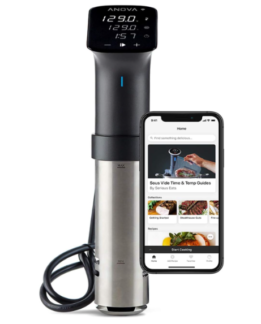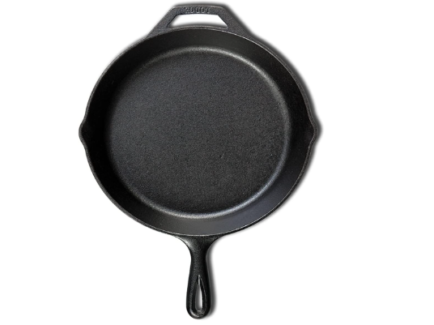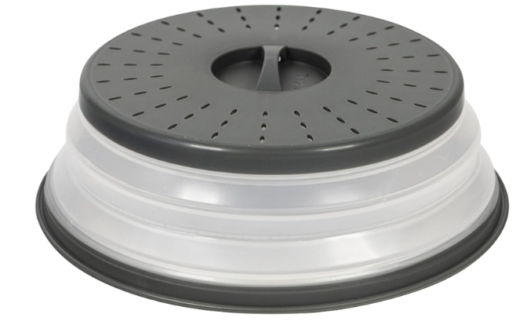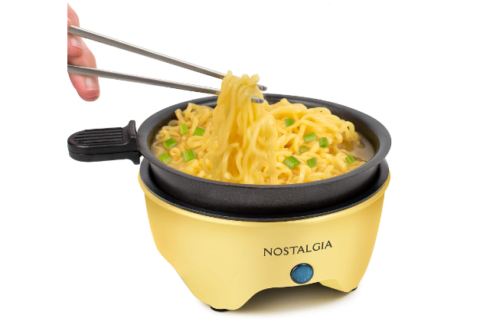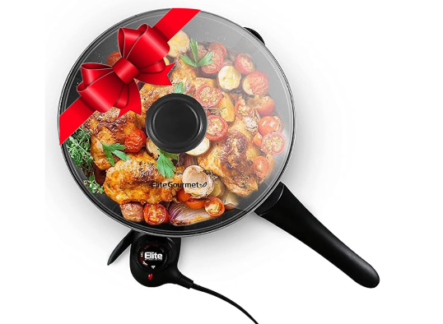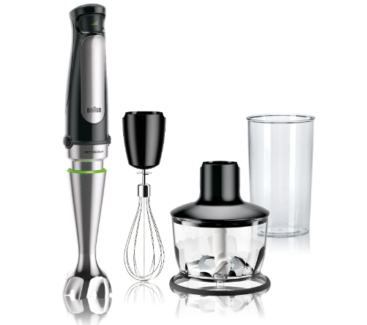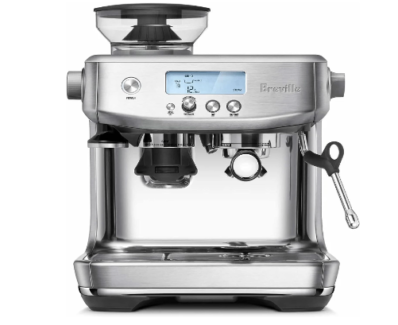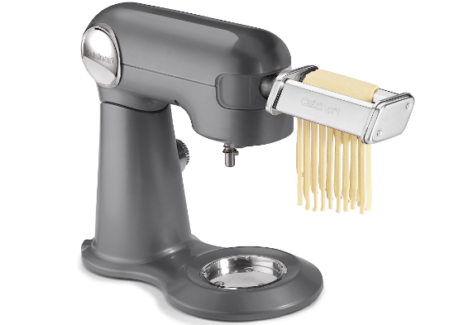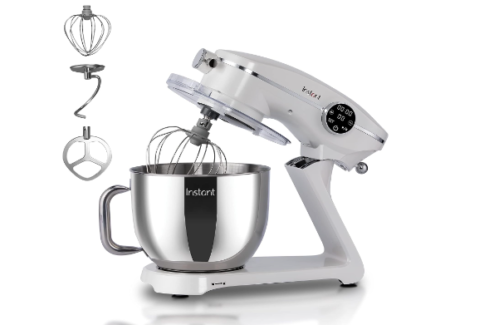An offset serrated knife is a type of kitchen knife...
Read More
A skinning knife is a specialized tool designed for removing the skin from game animals or fish. The blade is typically long, narrow, and curved, with a sharp point and a fine edge that makes it easy to maneuver around bones and joints. The handle is often made of wood, bone, or synthetic materials and provides a comfortable grip for the user. Skinning knives are commonly used by hunters, anglers, and professional butchers to prepare meat for cooking or further processing. A good skinning knife is an essential tool for anyone who wants to process their own game or fish, as it allows for precise cuts that minimize waste and ensure that the meat is free from hair, scales, and other unwanted materials.
What knife to use for skinning?
When it comes to skinning, the best knife to use is a dedicated skinning knife. Skinners are specialized knives that are designed specifically for this task, with a long, narrow, curved blade that is sharp and fine-edged to make precise cuts around bones and joints. A skinning knife’s blade should be made of high-quality stainless steel or a similar material that will hold an edge well and resist corrosion. The handle should also be comfortable and provide a secure grip, even when wet or slippery.
There are a few different types of skinning knives available, including:
- Drop Point Skinners: These knives have a curved blade that drops down toward the tip, making them ideal for working around bones and joints. They are also useful for precision cuts.
- Clip Point Skinners: These knives have a concave curve on the back of the blade, which creates a sharp tip that is useful for piercing through the skin.
- Gut Hook Skinners: These knives have a small, curved hook on the back of the blade that is used to open the animal’s abdomen and remove the internal organs.
Ultimately, the best knife for skinning is one that feels comfortable and efficient in the hands of the user, and that is designed specifically for this task.
What does a skinning knife do?
A skinning knife is specifically designed for the task of removing the skin or hide from game animals, such as deer, elk, or bear, as well as fish. The sharp, curved blade is designed to make precise cuts and maneuvers easily around bones and joints.
The pointed tip of the blade can be used to pierce through tough skin or to create an initial incision for the skinning process. The shape of the blade also allows for the removal of the skin in one smooth motion, minimizing the amount of meat wasted in the process.
A good skinning knife is an essential tool for anyone who wants to process their own game or fish, as it allows for a clean and efficient method of preparing the meat for cooking or further processing.
What is a skinning knife used for?
A skinning knife is primarily used for removing the skin or hide from game animals or fish. This tool is commonly used by hunters, anglers, and professional butchers to prepare meat for cooking or further processing.
Skinning knives are designed with a long, narrow, and curved blade that is sharp and fine-edged to make precise cuts around bones and joints. The blade’s curvature and pointed tip allow for easy maneuvering and piercing of the skin, and the shape of the blade also facilitates the removal of the skin in one smooth motion, minimizing the amount of meat wasted.
Additionally, some skinning knives come with gut hooks, which are small serrated blades on the spine of the knife used for opening the abdomen and removing the internal organs from game animals. Overall, a skinning knife is an essential tool for anyone who wants to process their own game or fish efficiently and effectively.
What is the best size skinning knife?
The best size for a skinning knife can vary depending on personal preference and the size of the game or fish being processed. However, in general, a good size for a skinning knife is between 3 and 5 inches in blade length.
This size provides a good balance between maneuverability and cutting power, allowing for precise cuts around bones and joints while still being able to handle larger animals.
A blade length of 3 inches is suitable for smaller game or fish, while a blade length of 5 inches is better for larger game. It’s also essential to consider the handle size when choosing a skinning knife to ensure a comfortable and secure grip during use. Ultimately, the best size for a skinning knife is one that feels comfortable and efficient in the hands of the user.
What is the hardness of skinning knife?
The hardness of a skinning knife can vary depending on the type of steel used in its construction. However, skinning knives are typically made from high-carbon stainless steel, which has a hardness between 55 and 60 on the Rockwell scale.
This level of hardness provides a good balance of durability and flexibility, allowing the blade to hold its edge while also being able to flex and bend as needed during skinning tasks. However, it’s important to note that the exact hardness of a skinning knife can vary depending on the specific model and brand.
What is the best blade angle for skinning knife?
The best blade angle for a skinning knife is generally between 20 and 25 degrees. This angle provides a good balance between sharpness and durability, allowing the blade to hold its edge while also being able to withstand the rigors of skinning. However, the exact blade angle that works best for you may vary depending on your personal preference, the type of animal you are skinning, and the specific model of skinning knife you are using.
Some skinning knives have a more acute angle for a sharper edge, while others have a more obtuse angle for added durability. It’s important to experiment with different blade angles to find the one that works best for your needs.
Why is it important to only cut the skin when skinning?
It is important to only cut the skin when skinning because cutting into the meat or internal organs can contaminate the meat and ruin it. When you are skinning an animal, you want to remove the skin as cleanly as possible, without damaging the underlying flesh or organs. This is particularly important if you plan to eat the meat, as any contamination can lead to foodborne illness.
Additionally, cutting into the internal organs can also affect the taste and quality of the meat. The internal organs contain enzymes and bacteria that can begin to break down the meat and produce unpleasant flavors and odors.
Therefore, it is important to use a sharp and precise skinning knife and to work carefully and methodically when removing the skin, ensuring that you only cut through the skin and not into the underlying flesh or organs.
What makes the best skinning knife?
There are several factors that contribute to making the best skinning knife, including:
- Blade Design: The blade of a skinning knife should be long, narrow, and curved, with a fine edge that can make precise cuts around bones and joints. The curvature of the blade allows it to glide smoothly over the animal’s skin, making it easier to remove the hide in one smooth motion.
- Blade Material: The blade of a skinning knife should be made of high-quality stainless steel or a similar material that is durable, holds an edge well, and resists corrosion.
- Handle Design: The handle of a skinning knife should be comfortable and provide a secure grip, even when wet or slippery. It should also be designed to allow for a variety of grips and positions, depending on the user’s preferences and the task at hand.
- Blade Length: The best skinning knife should have a blade length that is appropriate for the size of the animal being processed. A blade length of 3-5 inches is generally considered to be ideal for most skinning tasks.
- Gut Hook: Some skinning knives come with a gut hook, which is a small serrated blade on the spine of the knife used for opening the abdomen and removing the internal organs from game animals.
Ultimately, the best skinning knife is one that feels comfortable and efficient in the hands of the user and is designed specifically for this task. It should be durable, hold an edge well, and allow for precise cuts around bones and joints while minimizing waste.
Benefits of using skinning knife
There are several benefits to using a skinning knife for processing game animals or fish, including:
- Efficiency: A skinning knife is designed specifically for the task of removing the skin or hide from game animals or fish. Its sharp, curved blade allows for precise cuts around bones and joints, and the shape of the blade facilitates the removal of the skin in one smooth motion, minimizing the amount of meat wasted.
- Quality of Meat: Using a skinning knife ensures that the meat is properly prepared for cooking or further processing. Removing the skin and other unwanted tissues helps to improve the taste and texture of the meat and reduces the risk of spoilage.
- Versatility: A skinning knife is a versatile tool that can be used for a variety of tasks beyond just skinning. For example, some skinning knives come with gut hooks, which are small serrated blades on the spine of the knife used for opening the abdomen and removing the internal organs from game animals.
- Cost-Effective: Processing your own game animals or fish using a skinning knife can be a cost-effective way to obtain high-quality meat. It also allows you to have more control over the quality and quantity of the meat you process.
- Skill Development: Using a skinning knife requires a certain level of skill and practice, which can be rewarding to develop over time. It can also be a fun and challenging activity for outdoor enthusiasts and hunters.
What is the difference between a hunting knife and a skinning knife?
Hunting knives and skinning knives are both essential tools for hunting, but they are designed for different purposes. Here are the main differences between a hunting knife and a skinning knife:
- Blade shape: Hunting knives usually have a straight or slightly curved blade, while skinning knives have a more curved blade with a sweeping belly. The curved shape of a skinning knife makes it easier to make precise cuts and follow the contours of the animal’s body.
- Blade thickness: Hunting knives have a thicker and sturdier blade that can handle a variety of tasks, including skinning, butchering, and chopping. Skinning knives have a thinner, more flexible blade that is designed for delicate work, such as skinning and removing meat from bones.
- Blade length: Hunting knives typically have a longer blade that can handle larger game, while skinning knives have a shorter blade that is better suited for smaller game.
- Handle design: Hunting knives usually have a handle with a larger grip that provides a more secure hold, even when wearing gloves. Skinning knives have a narrower handle that allows for more precise control and flexibility.
- Versatility: Hunting knives are designed to be versatile and can handle a wide range of tasks, including skinning. Skinners are specifically designed for skinning tasks, and while they can be used for other tasks, they may not perform as well as a hunting knife.
In summary, hunting knives are more versatile, with thicker, sturdier blades and longer handles, while skinning knives are designed specifically for skinning and have thinner, more flexible blades and narrower handles.
How to use skinning knife safely
Using a skinning knife safely is essential to prevent accidents and injuries. Here are some tips to help you use your skinning knife safely:
- Keep your knife sharp: A dull knife can slip and cause injury. Always keep your skinning knife sharp and well-maintained.
- Use the right grip: Hold the knife firmly with your dominant hand and use your other hand to hold the game in place.
- Keep your fingers away from the blade: Make sure your fingers are clear of the blade and out of the way of the cutting path.
- Use a cutting board or stable surface: Use a cutting board or other stable surface to prevent the knife from slipping or sliding during use.
- Follow the natural contours of the animal: Use the shape of the animal to guide your cuts, and avoid cutting through bone or other hard materials that can damage your knife.
- Cut away from your body: Always cut away from your body, and use caution when making deep cuts or removing large sections of skin.
- Store your knife safely: After use, store your skinning knife in a sheath or other protective case to prevent injury or damage.
Remember to always use your skinning knife with caution and care. If you are unsure about how to use your knife safely, seek guidance from a professional or experienced user.
Factors to consider when choosing the best skinning knife
Choosing the best skinning knife can be a daunting task, but considering the following factors can help you make an informed decision:
- Blade material: The blade material affects the durability, sharpness, and ease of maintenance of a skinning knife. High-carbon stainless steel or premium quality stainless steel are excellent choices for skinning knives because they are rust-resistant, easy to sharpen, and hold an edge well.
- Blade shape: The blade shape of a skinning knife is critical because it determines how well it can skin and dress game. A curved blade with a drop point or a trailing point is ideal because it allows for precise cuts and easy maneuverability.
- Blade thickness: The thickness of the blade determines its sturdiness and flexibility. A thin and flexible blade is ideal for delicate skinning, while a thicker and sturdier blade is best for tougher game.
- Handle material: The handle material affects the grip and comfort of a skinning knife. Look for a handle made of durable materials that are comfortable to hold, such as wood, bone, or synthetic materials like rubber or plastic.
- Handle shape: The shape of the handle determines how comfortable the skinning knife is to hold and use. Look for a handle with a comfortable grip that provides adequate control and safety.
- Blade length: The blade length determines the size of game the skinning knife can handle. Choose a blade length that is appropriate for the game you intend to skin.
- Weight: The weight of a skinning knife affects its balance and maneuverability. Choose a knife that feels comfortable in your hand and is not too heavy or too light.
- Brand reputation and price: Consider the reputation of the brand and the price of the skinning knife. Choose a reputable brand with a history of producing quality knives and a price point that is within your budget.
Remember to consider these factors when choosing a skinning knife, and choose a knife that fits your needs, preferences, and budget.
How to clean skinning knife
Cleaning your skinning knife after each use is essential to maintain its performance and prevent rust or corrosion. Here are some steps to clean your skinning knife properly:
- Rinse the blade: Rinse the blade of your skinning knife under warm running water to remove any debris or blood. Avoid using hot water, as this can cause the blade to expand and contract, leading to damage.
- Wash the blade with soap: Use a mild dish soap or a specialized knife cleaning solution to wash the blade of your skinning knife. Use a soft-bristled brush or cloth to gently scrub the blade and handle, taking care not to scratch the surface.
- Dry the knife: Use a clean, dry cloth to wipe the blade and handle of your skinning knife thoroughly. Make sure to dry all parts of the knife, including the blade, handle, and any small crevices or grooves.
- Oil the blade: After cleaning and drying your skinning knife, apply a small amount of food-safe oil to the blade to prevent rust and corrosion. Use a soft cloth to apply the oil evenly to the blade and handle.
- Store the knife properly: Store your skinning knife in a dry location, away from moisture and humidity. Consider using a knife sheath or storage case to protect the blade and prevent damage.
Remember to always handle your skinning knife with care, and to clean and maintain it properly to ensure its longevity and performance.
How to sharpen skinning knife
Sharpening your skinning knife is an important part of maintaining its performance. Here are some steps to sharpen your skinning knife properly:
- Choose the right sharpening tool: You can sharpen your skinning knife with a sharpening stone, honing steel, or electric sharpener. Choose the tool that you are most comfortable using and that suits your knife’s blade material.
- Determine the angle: The angle at which you sharpen your skinning knife depends on the type of blade and the manufacturer’s recommendations. Most skinning knives have a bevel angle of 20-25 degrees.
- Hold the blade at the correct angle: Hold the blade of your skinning knife at the correct angle against the sharpening tool. If using a sharpening stone, place it on a flat surface and hold the knife at a 20-25 degree angle to the stone. If using a honing steel, hold the steel at a 20-degree angle to the blade.
- Move the blade along the sharpening tool: With a consistent angle, move the blade along the sharpening tool, applying light pressure. Start at the heel of the blade and move towards the tip. Repeat this process on both sides of the blade until it is sharp.
- Hone the blade: After sharpening, hone the blade with a honing steel to smooth out any burrs or rough edges.
- Test the blade: Test the sharpness of your skinning knife by gently running the blade over a piece of paper. A sharp blade should slice through the paper with ease.
- Clean the blade: After sharpening, clean the blade of your skinning knife with warm, soapy water and dry it thoroughly before use.
Remember to always take care when sharpening your skinning knife, and to follow the manufacturer’s recommendations and safety instructions.
How to maintain skinning knife properly
Proper maintenance is essential to ensure that your skinning knife stays sharp, safe, and functional. Here are some tips on how to maintain your skinning knife properly:
- Clean your knife after each use: Use warm, soapy water and a soft cloth to clean your skinning knife after each use. Be sure to dry it thoroughly before storing it.
- Oil your knife: Regularly oil your skinning knife with a food-safe oil to prevent rust and corrosion. Apply a small amount of oil to a soft cloth and wipe down the blade and handle.
- Sharpen your knife: A sharp skinning knife is essential for efficient and safe skinning. Use a sharpening stone or other sharpening device to maintain a sharp edge on your knife. Be sure to maintain a consistent angle and avoid pressing too hard, as this can damage the blade.
- Store your knife properly: Store your skinning knife in a dry location, away from moisture and humidity. Consider using a knife sheath or storage case to protect the blade and prevent damage.
- Handle with care: Always handle your skinning knife with care and avoid using it for tasks it was not designed for. Avoid using your knife to pry, as this can damage the blade or handle.
- Seek professional repair if needed: If your skinning knife is damaged or not functioning properly, seek professional repair or replacement. Do not attempt to repair or sharpen your knife yourself unless you have the proper tools and experience.
Troubleshooting about skinning knife
Here are some common troubleshooting tips for skinning knives:
- Dull blade: If your skinning knife’s blade is dull, it can make the skinning process difficult and can result in wasted meat. To sharpen your blade, use a sharpening stone or other sharpening device, following the manufacturer’s instructions. Be sure to maintain a consistent angle and avoid pressing too hard, as this can damage the blade.
- Blade rust: If your skinning knife is showing signs of rust, it may be due to exposure to moisture or improper storage. To remove rust, use a rust eraser or a mild abrasive, such as baking soda or toothpaste, and gently scrub the affected area. To prevent further rust, store your skinning knife in a dry location and wipe it down with a cloth after use.
- Loose handle: If your skinning knife’s handle is loose, it can make the knife difficult to control and can be dangerous. To fix a loose handle, tighten the screws or pins that hold the handle in place. If the handle is still loose, you may need to replace the handle or seek professional repair.
- Bent or chipped blade: If your skinning knife’s blade is bent or chipped, it can make the skinning process difficult and can be dangerous. If the blade is bent, try gently straightening it using pliers or a similar tool. If the blade is chipped, it may need to be professionally sharpened or replaced.
- Blade corrosion: If your skinning knife’s blade is showing signs of corrosion, it may be due to exposure to acids or other corrosive substances. To prevent further corrosion, clean your knife after each use and store it in a dry location. If the corrosion is severe, you may need to seek professional repair or replacement.
Skinning knife - FAQs
Sure, here are some frequently asked questions (FAQs) about skinning knives:
A skinning knife is designed for removing the skin or hide from game animals or fish, while a fillet knife is designed for filleting fish. A fillet knife typically has a flexible blade that is thin and long, making it easier to make precise cuts along the bone and skin of fish.
Yes, a skinning knife can be used for a variety of tasks beyond just skinning. For example, some skinning knives come with gut hooks, which are small serrated blades on the spine of the knife used for opening the abdomen and removing the internal organs from game animals. Skinning knives can also be used for trimming fat, removing tendons, and other tasks.
The ideal size for a skinning knife can vary depending on personal preference and the size of the game animals or fish being processed. A blade length of 3 to 5 inches is typically sufficient for most skinning tasks.
High-carbon stainless steel is a popular choice for skinning knives as it offers a good balance of durability, sharpness, and resistance to corrosion. Other popular steels for skinning knives include tool steel and Damascus steel.
Sharpening a skinning knife requires a sharpening stone or other sharpening device. Start by holding the blade at a 20-degree angle to the stone and running it back and forth along the stone, using moderate pressure. Repeat this process on both sides of the blade until it is sharp. Be sure to maintain a consistent angle and avoid pressing too hard, as this can damage the blade.
Do you still need a skinning knife?
If you are a hunter or an outdoor enthusiast who enjoys processing your own game animals or fish, then a skinning knife can be a valuable tool to have in your kit. While it is possible to use other types of knives, such as hunting knives, for skinning, a dedicated skinning knife is often the best tool for the job.
A skinning knife is designed specifically for the task of removing the skin or hide from game animals or fish. Its narrow, curved blade allows for precise cuts around bones and joints, and the shape of the blade facilitates the removal of the skin in one smooth motion, minimizing the amount of meat wasted. A skinning knife can also be used for other tasks, such as trimming fat and removing tendons and other unwanted tissues.
In short, while it is possible to skin an animal with other types of knives, a dedicated skinning knife can make the task easier, more efficient, and less wasteful. If you plan on processing game animals or fish on a regular basis, then a skinning knife is definitely worth considering as part of your kit.
Related Posts
How To Sharpen A Pocket Knife
This step-by-step guide will teach you how to keep your pocket...
Read MoreWhy Trust Us
You will find what you are looking for at Jody's Bakery. From classic to luxury brands, you'll find both. We will help you to select appliances that fit your needs, budget and lifestyle. Whether you want to stop by to learn more — or plan to make a major purchase — we’ll treat you like family and assist you every step of the way. Shop with us today to receive friendly and experienced help along the way.









